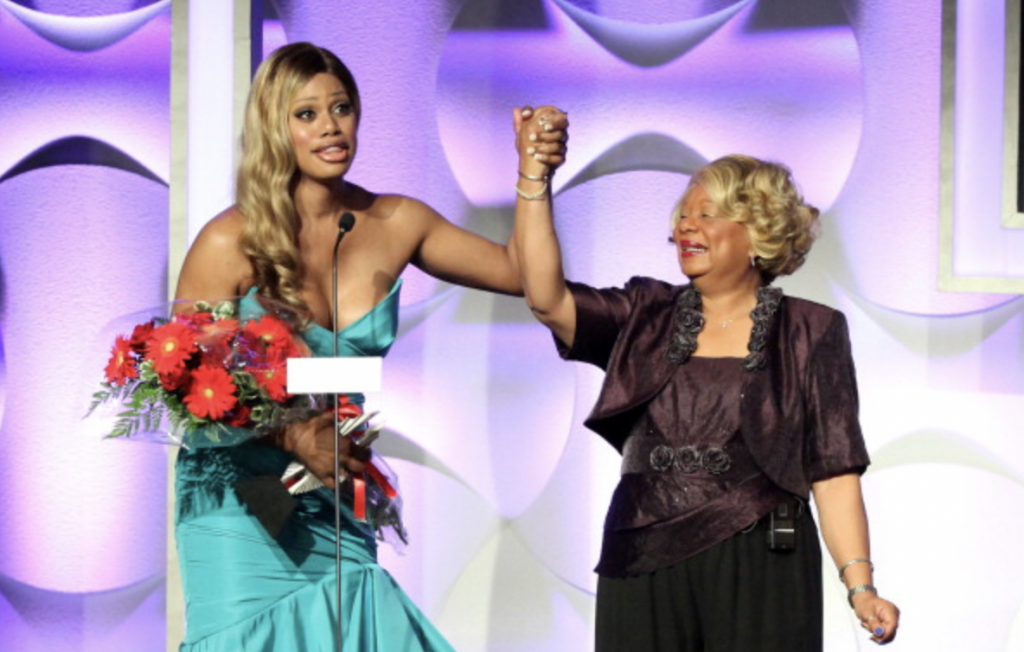Holmlund Prize Winners
“Queer Times in Moonlight“
2022 SCMS Queer & Trans Caucus Chris Holmlund Graduate Student Writing Prize
By Míša Stekl
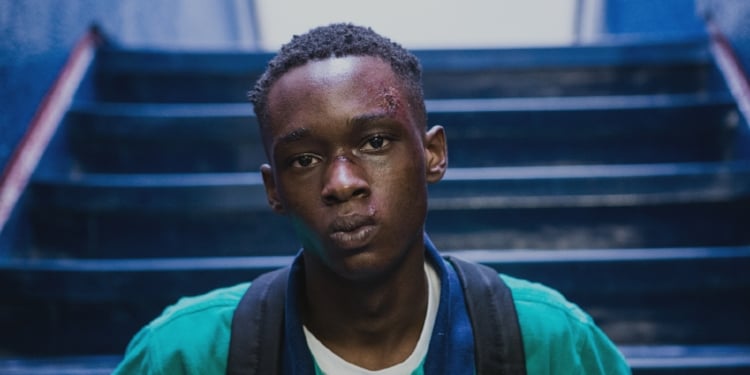
EXCERPT: “Moonlight’s narrative only appears to progress from the challenges that Chiron faced as a child, nicknamed ‘Little’, to his adult reconciliation with his sexual identity and with his estranged lover, Kevin. If we look more closely, differential repetitions disturb the linearity of this coming-of-age plot: adult Chiron’s dreams reiterate Little’s childhood traumas; adult Chiron’s identity as ‘Black’ (his chosen name) is styled after the aesthetics and drug-dealing career of his childhood mentor, Juan; and even the film’s cinematic cuts tend to confront viewers with a multiplicity of repetitions with a difference, or perhaps repetitions of difference.” READ THE FULL ARTICLE HERE.
Over the corporate rainbow: LGBTQ film festivals and affective media networks
2021 SCMS Queer & Trans Caucus Chris Holmlund Graduate Student Writing Prize
By Sean M. Donovan

Excerpt: “LGBTQ film festivals are powered by the communicative work of what I’m naming affective media networks, the organization of public feeling made from contrasting nodes of affective transmission. Affective media networks are comprised of individual textual satellites that can be films, advertising, screening arrangements, festival documents, etc., all with the potential to be, in Steven Shaviro’s words, ‘machines for generating affect’, constructing a negotiated meaning within a spectator’s personal experience (3). Individual texts may muster particular affects, but melded together in a network the cumulative meaning is more complex, and a productive space for processing mixed feelings.” READ THE FULL ARTICLE HERE.
Changing the reflection: re-visions on the trans mirror scene
2021 SCMS Queer & Trans Caucus Chris Holmlund Graduate Student Writing Prize
By Joshua Bastian Cole
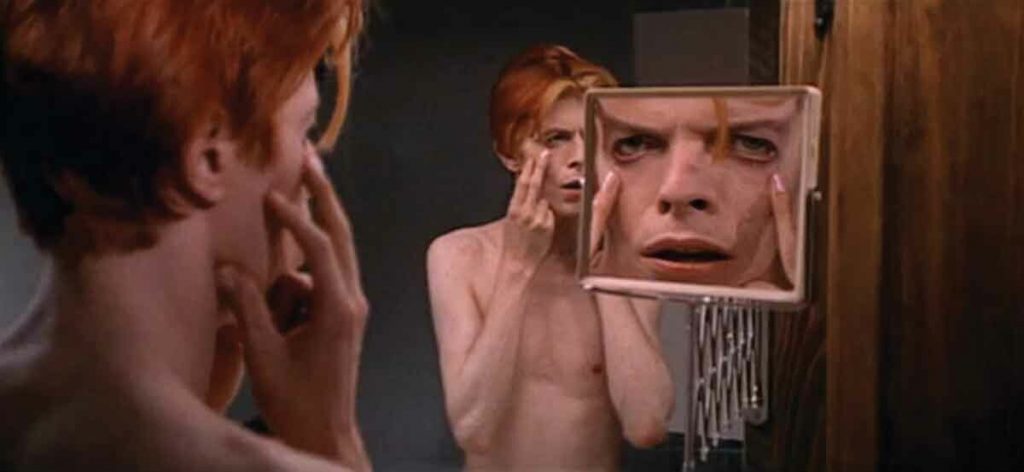
Excerpt: “For trans people, felt experience does not always correspond to the image in the visual field. There is, rather, a tacit knowledge of the body, retained even when not reflected, the body under the surface that Prosser and Cáel M. Keegan have described (‘Revisitation: A Trans Phenomenology of the Media Image’ 31–34). Dysphoria is recognized for its dysfunction, its discordance and incongruence between schematic understanding and visual image.” READ THE FULL ARTICLE HERE.
“‘Flat-Out’ Formalism: Strong Island as Trans-of-Color Critique”
2020 SCMS Queer & Trans Caucus Chris Holmlund Graduate Student Writing Prize
By Tory Jeffay
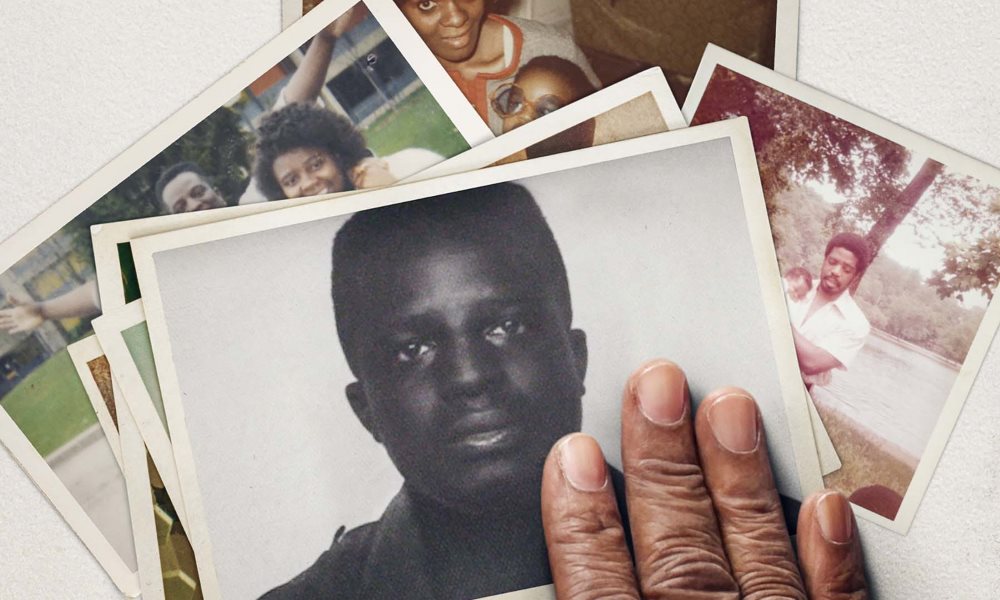
Excerpt: “This formal emphasis on surface mirrors the film’s rejection of a mode of seeking truth through uncovering hidden, authoritative knowledge. Flatness, as I theorize it, critiques the logic of the trial, in which the only evidence admissible in court pertains directly to the circumstances of the crime. Ford instead incorporates the evidence of history, space, and body, reaggregating a broad range of evidence by leveling it onto the same flat plane of relevance. Opposing the narrative expectations of nonfiction film in which facts are logically strung together to reveal an authoritative truth, Ford fabulates connections so that landscape, family snapshot, and his own body intersect as evidence in his brother’s murder.” READ THE FULL ARTICLE HERE.
Grief, ecocritical negativity, and the queer anti-pastoral
2018 SCMS Queer & Trans Caucus Chris Holmlund Graduate Student Writing Prize
By Cameron Clark

Excerpt: “Ecocinema and world cinema generally share a ‘framework for conceptualizing the ways that cinema is situated within, and in dialogue with, the world.’ For queer film scholars, these frameworks often prioritize generative world-building endeavors, especially in regard to romance, sensual discovery, communal recovery, or ecological awareness. Queer anti-pastorals such as my three case studies, however, present more nonegalitarian, inhospitable, and discomforting representations of queerness within the natural world that often struggle to achieve interpersonal or ecological connections. This representative practice may seem to counter critical discourses for queer ecocinema and world cinema. Yet, my argument is that these queer anti-pastorals reconfigure these discourses by bringing more attention to injurious world-shattering occurrences and their subsequent restructurings. This, in turn, compels a reconsideration for how queer ecocinemas may not merely counter negativity, but they may also reappraise it for ‘new accounts of the world’” Read the full article HERE
Articles
Rom-com without romonormativity, gays without homonormativity: examining the People Like Us web series
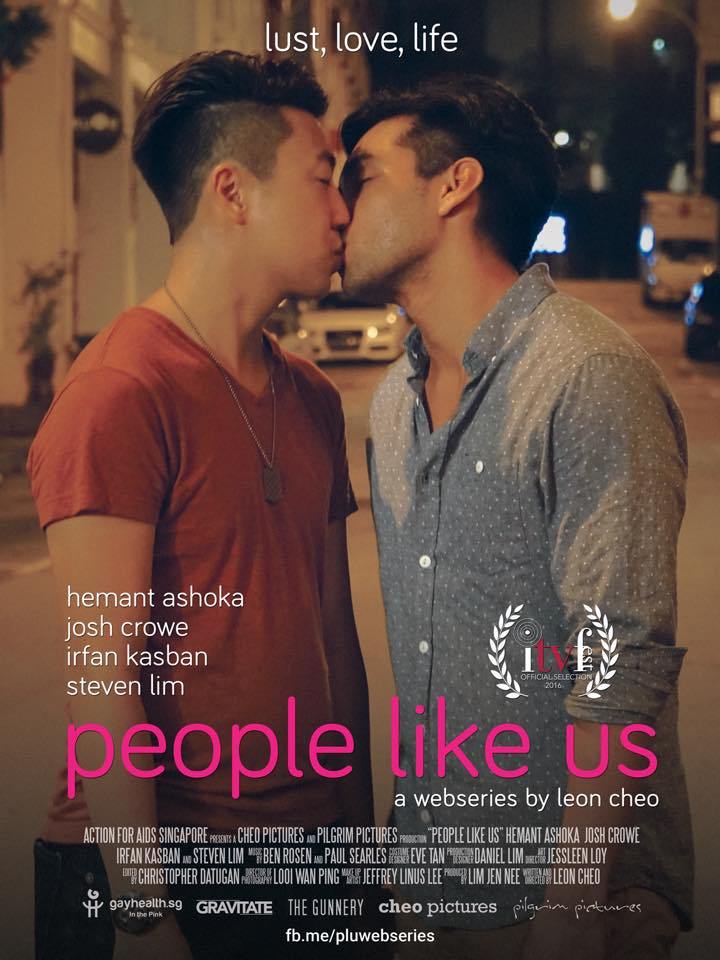
By Eve Ng
Excerpt: “Certainly, rom-coms featuring same-sex relationships may be narrativelyflawed, including retreading the ground of straight rom-coms. LGBTQ themed media have been critiqued for failing to offer more radical challenges to sociopolitical norms, instead homonormatively (Duggan 2002) reinscribing discourses about monogamous coupledom, sexual discretion, and consumerist aspirations in lieu of structural critiques of patriarchy and capitalism. With respect to the rom-com genre more specifically, I will discuss this as what I term romonormativity – a privileging of monogamous romance that, in the case of same-sex relationships, further marginalizes other, queerer modes of intimacy and being (e.g. see Kipnis 2003). While PLU follows the rom-com script regarding romance to a significant degree, it veers off the romonormative path in important ways different from the unstable or immature masculinity around sex and commitment identified by Alberti (2013) and Jeffers McDonald (2008). It also avoids both the desexualization and hypersexualization that characterized many earlier screen depictions of gay men.” Read the full article here
A gasp of air: posthuman intimacies in Tejal Shah’s Between the Waves
By Lakshmi Padmanabhan
Excerpt: “I follow Lim’s approach to temporal critique, drawing on postcolonialism and Deleuzian film theory. However, in this article, I am invested in understanding the untimely emergence of potential futures, rather than the haunting of colonial pasts. ‘Postcolonial untimeliness’ names what I have been developing as the critique of linear temporality. The ‘untimely interval’ articulates a moment that is besides linear temporality, and one that operates within its own temporal registers, thereby allowing us to imagine futures that may have been foreclosed in the linear progression from the past to the present. In its occupation of the untimely interval, Between the Waves, I argue, is instructive in that it attunes us to shared potential futures, where the boundaries between self and other, human and nonhuman continuously escape easy identification.” Read the full article here

‘There is a reason why Sporty Spice is the only one of them without a fella …’: the ‘lesbian potential’ of Bend it Like Beckham
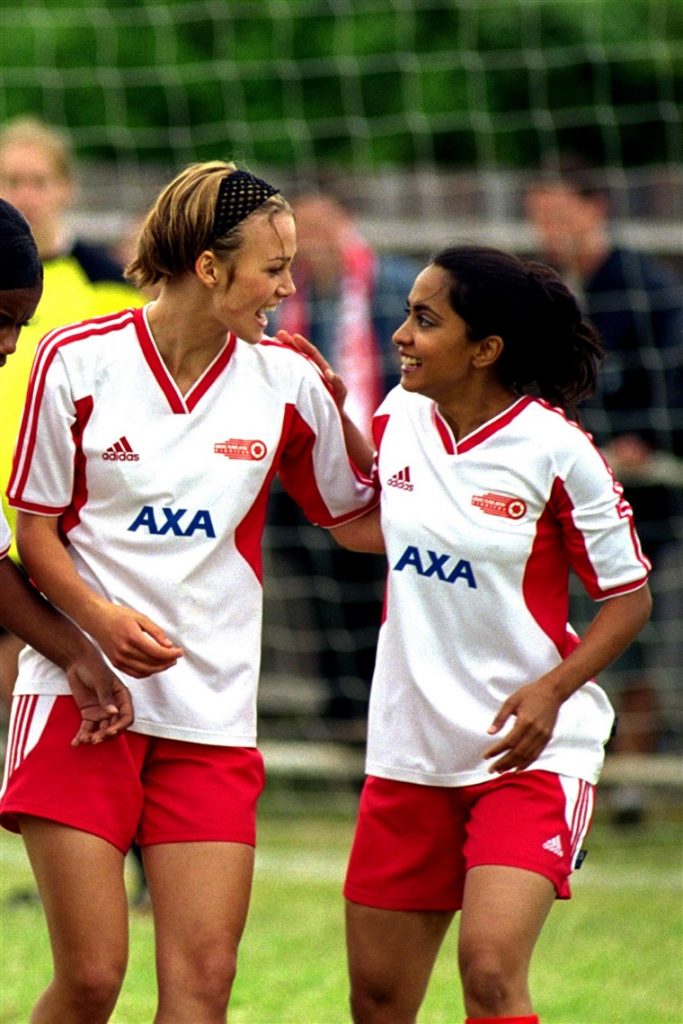
By Katharina Lindner
Excerpt: “Bend it Like Beckham (Chadha, 2002) is a romantic teen comedy, critically acclaimed primarily for the ways in which it addresses issues of multiculturalism in Britain, in particular the cultural conflicts experienced by the Indian immigrant community. These conflicts are largely played out in relation to the athletic context of the film as well as the interactions between its football-playing female protagonists, Jess (Parminder Nagra) and Jules (Keira Knightley). Focusing more specifically on articulations of gender and sexuality, I will situate the film within the larger generic context of the (female) sports film and argue that the athletic (bodily, emotional, looking) relations between the central characters allow for appropriative viewing pleasures to be taken in this superficially ‘straight’ text.” Read the full article here
The Text in the Third Degree: Gay camp recoupment in What Ever Happened To …? and High Heels
By Bruce Williams
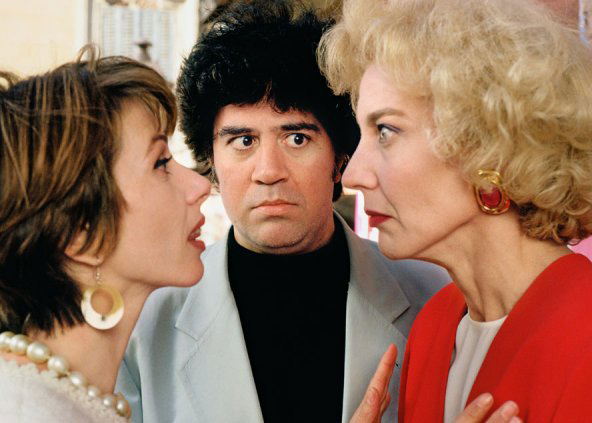
Excerpt: “David Greene’s film textualizes the cult phenomenon of Aldrich’s work as well as the ambiance in which such a phenomenon is played out. In the hypertext, the obviously gay character of Baby Jane Hudson’s accompanist, played by Victor Buono, is weak and unassertive, dominated by the Cockney mother with whom he lives. Greene’s personal manager, on the other hand, is a wheeler-dealer, and is in essence, a movie queen gone amuck. Never allowing Jane to actually drive him home following their meetings, he has her drop him off in front of a mural located in the center of Hollywood and depicting Hollywood idols, all integral to gay iconography. The manager is immediately accosted by a group of young guys, most likely street hustlers, who wish to introduce him to a new boy. Suggesting that the manager also dallies in the rent boy trade, this sequence underscores by implication the financial difficulties which have led him to take a menial job in a video rental shop, where he and Jane meet.” Read the full article here
From screen to stage: Almodóvar’s All About My Mother
By Gwynne Edwards

Excerpt: “As for All About My Mother, Manuela wears a long red coat as she stands in front of a theatre poster which is also predominantly red. When she watches television with her son Esteban, she has a red top. Later still, the transsexual prostitute Agrado is dressed in a vivid red imitation Chanel dress, and when the actress Huma Rojo is seen rehearsing a scene from Lorca’s play Blood Wedding, she has a red shawl. The way in which Almodovar presents his characters in terms of their appearance is, then, the very opposite from Christian Metz’s suggestion that, unlike a stage-play, ‘a film does not at all depend on the strong presence of an actor but, rather, on the low degree of existence possessed by those ghostly creatures moving on the screen’ (1974, 9). Almodovar’s characters have an immediate and arresting presence and are far from ghostly.” Read the full article here
Hold me, thrill me, kiss me, kill me: the ambivalent queer of post-network television
By Andrew J. Owens

Excerpt: “In a recent study of American television’s spectrum of masculine representations, Amanda Lotz (2014, p. 49) asserts that the transformation of the medium’s norms regarding the representation of gay men, ‘from absence to occasional pathologized or mocked characters to a context where gay identity is banal and being closeted is pathologized. . .marks a trajectory of amazing speed and indicates a clear contestation of heteronormativity unquestionably relevant to the analysis of televised masculinities.’ Indeed, if queer horror programming like Dante’s Cove renders moot any attempt at subtextual queer reference, the question then becomes: ‘when monstrousness as a metaphor for the threat that homosexuality poses to heteronormativity ceases to be coded and instead becomes open, what does it mean?’” Read the full article here
Productive Discomfort in the Classroom: Teaching Boys Don’t Cry
By Alexandra Barron
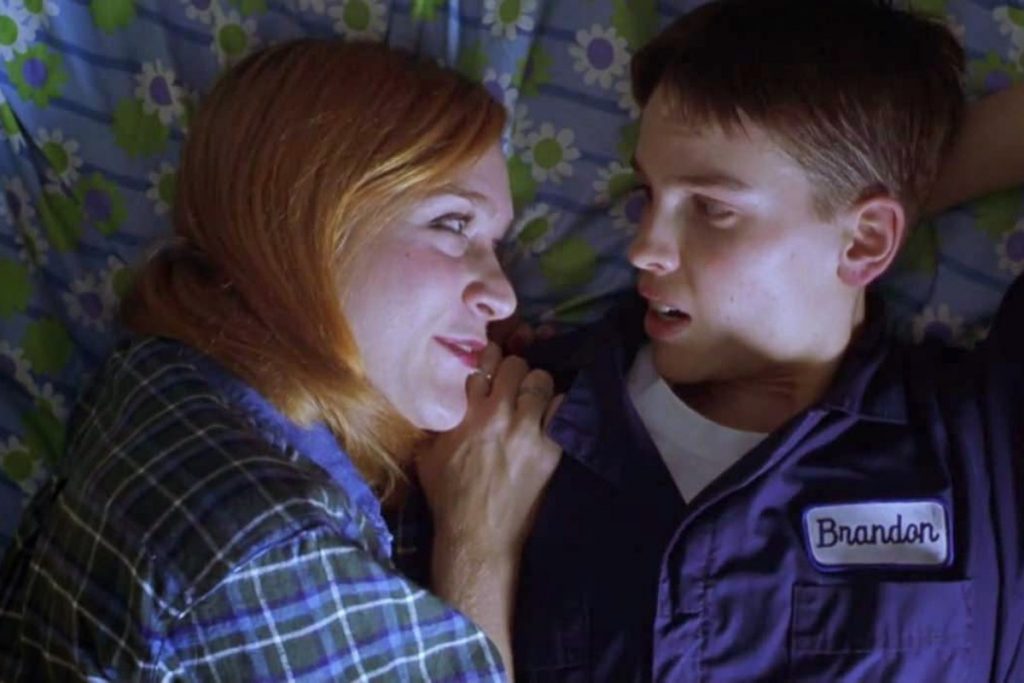
Excerpt: “My students have had a range of reactions to the film from acknowledgements that it has radically altered their views on gender and sexuality to overt hostility that they were made to watch it because it disturbed them so intensely. In this article, I examine their writing and our class discussions in an attempt to get at how the film produced both the outrage some expressed at being ‘forced’ to see the film and the transformation others articulate after viewing it. I became interested in student reception of Boys Don’t Cry because no other text I have assigned, not even Toni Morrison’s intellectually and emotionally challenging neo slave narrative Beloved, has produced such intense reactions in my students. I continue to teach Boys Don’t Cry, despite the negative reactions of a few, because it is a beautifully made, rich, and accessible text that enables discussions of genders beyond male and female. Furthermore, it directly addresses hate crimes and challenges students on their own transphobia and homophobia.” Read the full article here
The monogamous/promiscuous optics in contemporary gay film: registering the amorous couple in Weekend (2011) and Paris 05:59: Théo & Hugo (2016)
By Cüneyt Çakırlar & Gary Needham
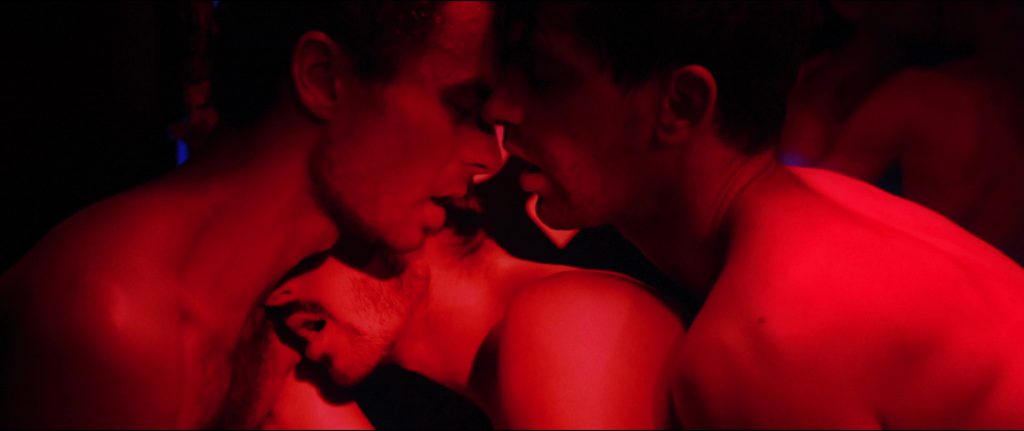
Excerpt: “What particularly interests us here is how monogamous relationality can be considered a register in gay filmmaking. By register, we refer to Bersani and Dutoit’s quest for the formal correspondences in art, which may provide us with ‘visual models . . . [for] the vast community of dispersed yet related being’ (2005, n.p., our emphasis). Using this approach to trace forms of relationality in arts that disperse subjectivity, we first would like to explore a cinematic rendering of a monogamously ‘settled being’ in coupling. Rather than seeking to corroborate Bersani’s framework of relationality through a selection of films, this discussion will attempt to extend the mutual exchange between film/arts and thought within his relational aesthetic of subjectivity.” Read the full article here
The end of intimate politics in Yorgos Lanthimos’ The Lobster
By Timothy Laurie & Hannah Stark

Excerpt: “The connotative meshwork of the ‘lobster’ as a literary and cultural signifier gathers together the central concerns of Lanthimos’ film: absurdity and abjection in modern life, class aspiration and the hypocrisies of taste hierarchies, and the complicity of individuals in collective practices of cruelty. The lobster has long been a symbol of the absurd, from Lewis Carroll’s ‘Lobster Quadrille’ in Alice in Wonderland (2012 [1865]) to Gérard de Nerval’s penchant for strolling through the Palais-Royal Gardens in Paris with a pet lobster on a blue ribbon. In T.S. Eliot’s ‘The Love Song of J. Alfred Prufrock’, the lobster’s ‘ragged claws’ scuttle across the ocean floor, capturing the titular character’s desire to escape the ordeals of the modern world for the ‘floors of silent seas.’ Eliot’s other sea imagery connects the crustacean to romantic failure, as the mermaids speak ‘each to each’ but not to Prufrock (1915). Promotional posters for The Lobster evoke these scuttling claws with their images of pairs of disembodied hands embracing an invisible body.” read the full article here
Blue is the Warmest Color: or the after-life of ‘Visual Pleasure and Narrative Cinema’
By Linda Williams
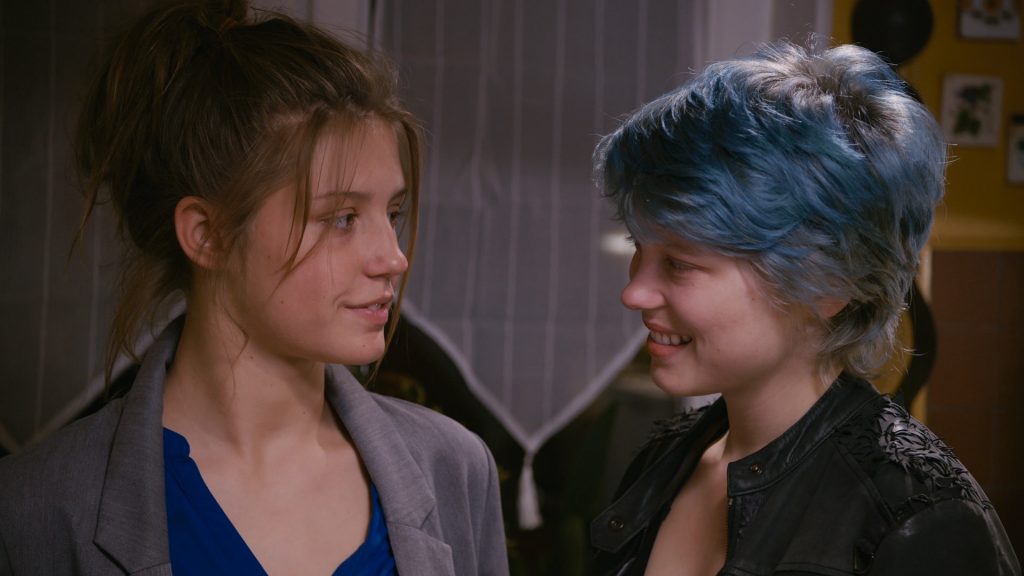
Excerpt: “I’m especially interested in the fact that feminist critics tended to describe the sex scenes as pornographic. In doing so they often cited the appearance of ‘the reverse cowgirl’ position, automatically condemned because it is considered to be favored by straight pornography’s depiction of so-called ‘lesbian numbers.’ Writing for the New York Review of Books, Lorrie Moore makes a more blanket condemnation of carnality: ‘as is true of most carnality, [it] causes interesting parts of these women’s personalities to recede … and the portrait of them that the film has ostensibly been working on grinds, so to speak, to a halt.’ Moore’s idea that carnality destroys all subtlety and nuance in the study of a character seems to suggest that acting itself goes out the window whenever sex rears its ugly head. Add to this the problem that the putatively ‘too much’ sex is also lesbian sex, which is either regarded as ‘deviant’ or, in other eyes, as not even sex, and you have a recipe for a perfect critical storm: the often decorative, non-penetrative nature of much lesbian sex in heterosexual pornography has long been reviled by ‘real’ lesbians as inauthentic.” read the full article here
Romantic female friendships as resistance: subversive web series in the United States and India
By Molly Bandonis & Namrata Rele Sathe
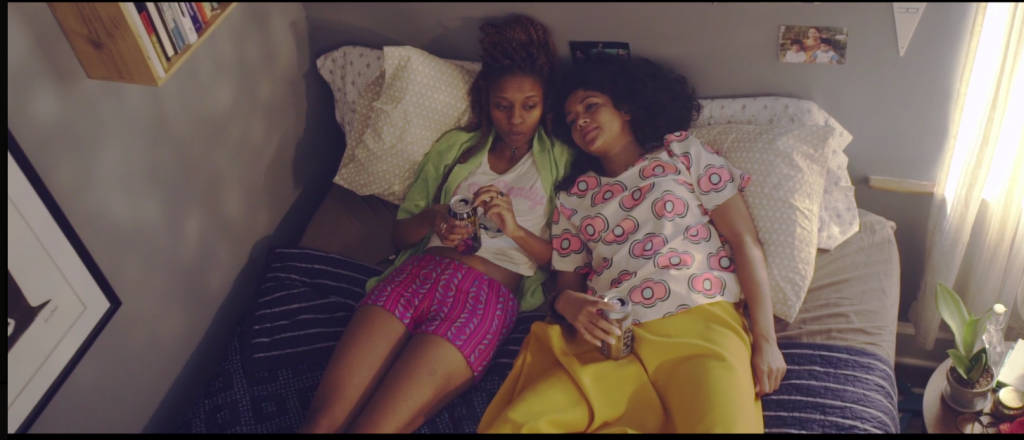
Excerpt: “Despite diverse production contexts, representations of lesbian subjectivities in television narratives remain overwhelmingly confined to wealthy, cosmopolitan, white individuals. The depiction of queer identities onscreen largely fails to challenge or subvert subject positions that align with an ideal consumer: someone socially mobile and economically viable. Brown Girls foregrounds queerness early. Leila’s introduction in the first episode is followed by that of her sometimes-partner, Miranda (Melissa DuPrey), draped only in a sheet, lying in bed, where they’ve just spent the night together. Leila must navigate her queer identity through questions of monogamy (which she evades when Miranda requests it), and through cultural expectations set by her familial heritage.” read the full article here
What ever happened to West Side Story? Gene Kelly, jazz dance, and not so real men in Jacques Demy’s The Young Girls of Rochefort
By Svea Becker & Bruce Williams

Despite its rather straightforward, tightly constructed narrative, The Young Girls of Rochefort‘s network of intertextuality renders it a much more intricate and challenging work than evident on a superficial viewing. One can attribute a great deal of the film’s complexity and sexual tension to its celebrity intertext, a notion in which the celebrity or notoriety of an artist becomes inseparable from the text itself (Stam 1992, 207). The celebrity intertext of American dancers Gene Kelly, George Chakiris, and Grover Dale, combined with a fusion of jazz dance and European direction and choreography imbues the film with marked sexual ambiguity. READ MORE.
Reviews
Review of Fassbinder: Thousands of Mirrors by Ian Penman
By Will Hair

Review of A queer way of feeling: girl fans and personal archives of early Hollywood
By Angie Fazekas

Excerpt: “A Queer Way of Feeling is thus a vital contribution to the complex intersections of queer history and fan studies, adding depth and nuance to our understanding of modern queer fandom practices.” Read the full review here
Review of Camp TV: trans gender queer sitcom history
By Taylor Cole Miller
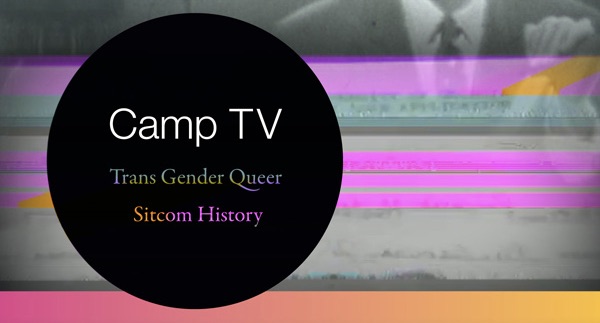
Excerpt: “As a whole, Camp TV offers us theoretical and methodological challenges to presumptions and argumentations common in queer media histories, such as those that dismiss trans gender queer characters as stereotypes rather than the meaningful and intentionally (encoded and decoded) queer characters they often were – hence the usefulness here of a new terminology entirely. What the book also offers, however, is an impressive model of a full-scale approach to queer media histories, one that utilizes textual analyses, historiographic methods, queer theory and queer archival research all assessed without the presumption of TV’s supposed progressive trajectory. ” Read the full review here
Review of Lesbian cinema after queer theory
By Katrin Horn
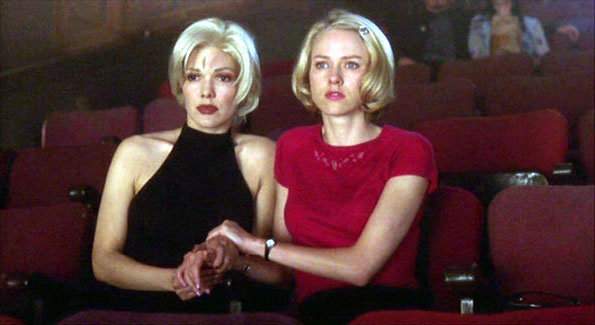
Excerpt: “Clara Bradbury-Rance’s book Lesbian Cinema after Queer Theory addresses a deceptively simple question with broad implications: can there be a lesbian cinema after queer theory’s critique of politics that are built around stable gender and sexual identities? The question is made more urgent by the crucial changes our media landscape has undergone simultaneous with the rise of queer theory over the past two decades. Just as they have become theoretically suspicious, lesbians have also seemingly become representationally ubiquitous. Like my own writing on lesbian cinema after 2000 (which spurred my interest in this book (Horn 2017)), Bradbury-Rance’s work must, therefore, contend with the transformation of the lesbian’s cinematic status from invisibility to hypervisibility. Against this backdrop, Lesbian Cinema after Queer Theory offers a provocative argument against both the ‘visibility imperative’ (xiii) and the representational hegemony of climactic sex scenes as the litmus test of ‘authentic’ lesbian representation within contemporary cinema.” Read the full review here
Review of The new gay for pay: the sexual politics of American television production
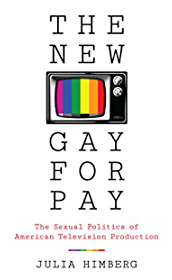
By Chelsea McCracken
Excerpt: “In Chapter 3, Himberg tackles the ‘diversity’ buzzword, and explores how ‘openly gay and lesbian industry workers conceive of diversity and how these conceptions are embedded in their daily work.’ Specifically, Himberg notes that diversity can have ‘both public and private definitions, depending on the stakeholder, the activist, and the cause,’ and that particular practices can be obscured from public view, creating an ‘under-the-radar activism’ that requires ‘a more robust definition of diversity when it comes to both LGBT activism and cultural workers.’ As a central case study within this chapter, Himberg offers a close examination of the work of Howard Bragman, a seasoned publicist with a specialty in helping LGBT celebrities navigate publicly coming out. His list of clients includes athletes such as Sheryl Swoopes and musicians like Chely Wright. Discussing his tactics in managing public images reveals a range of approaches and methods that demonstrate the complexity and individuation of the coming out narrative.” read the full review here
Review of Chantal Akerman
By Joseph Mai
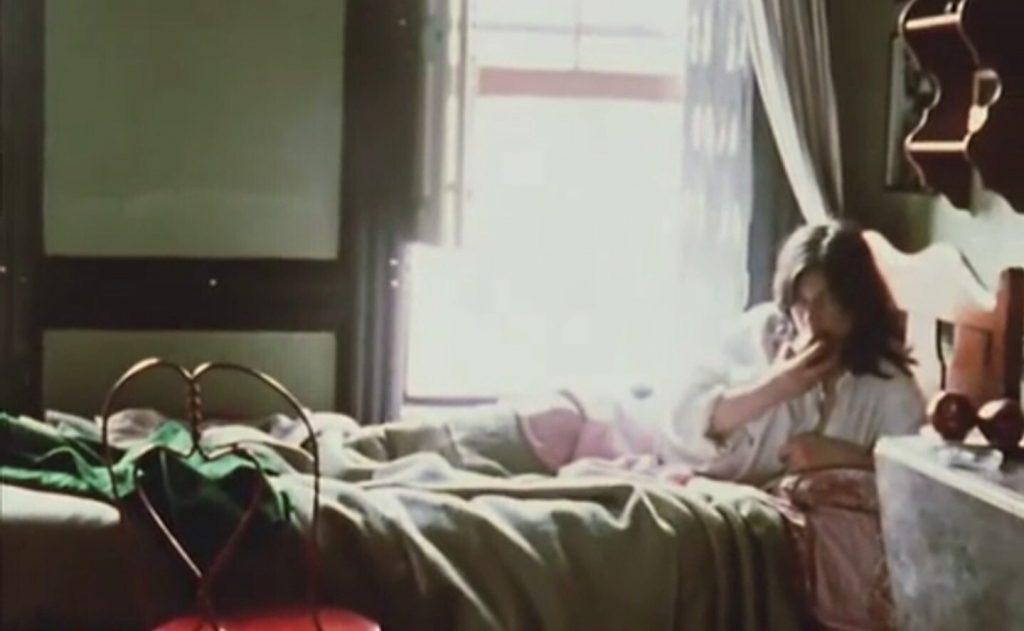
Excerpt: “Akerman is perhaps best known for her work during the 1970s, and Schmid’s treatment of the films made during this period is appropriately the longest. Here Schmid describes Akerman’s renunciation of film school; her stops in New York where she discovers structuralist filmmaking; and her daring explorations of time, space, and gender. Through these films Schmid emphasizes Akerman’s cinema of bodies (quite often her own) and their movements through space, an approach in part inspired by the dance of Yvonne Rainer. Her treatment of Jeanne Dielman is particularly thorough. Even as she synthesizes the conclusions of other scholars, Schmid complicates things by delving into the atypicalities – Jeanne’s seeming embrace of her mundane lifestyle and references to her traumatic past during the war – of this character who has too often been read uniquely as an exemplar of women suffering domestic oppression.” Read the full review here
Blog Features
Towards Other Forms of Queer Visibility
By Raed Rafei
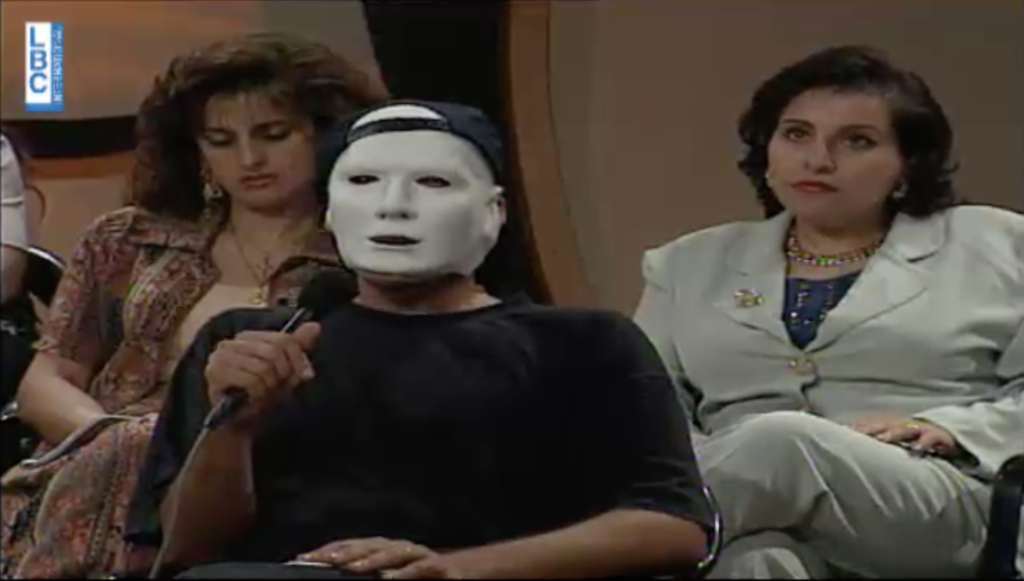
On Laugher and Survival: A Conversation between Barbara Jane Brickman and Katrin Horn on Suffering Sappho! Lesbian Camp in American Popular Culture (Rutgers UP, 2023)

Diana W. Anselmo and Maggie Hennefeld on A Queer Way of Feeling: Girl Fans and Personal Archives of Early Hollywood (UC Press, 2023)

“Casting Closets, Casting Spells: an Interview with Alfred L. Martin, Jr. & Andrew J. Owens”
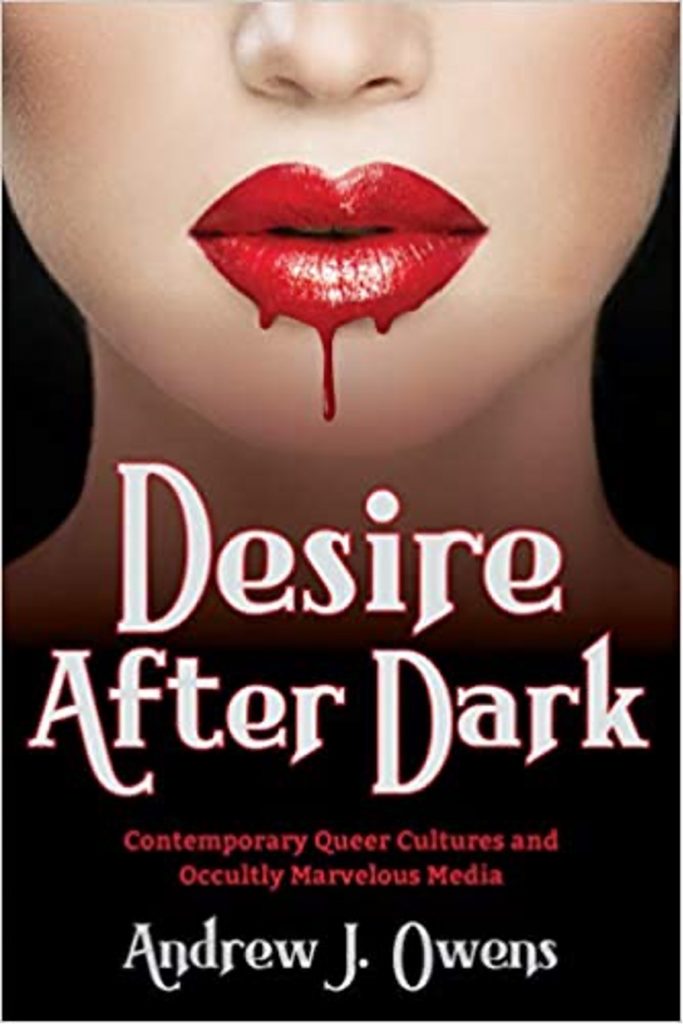
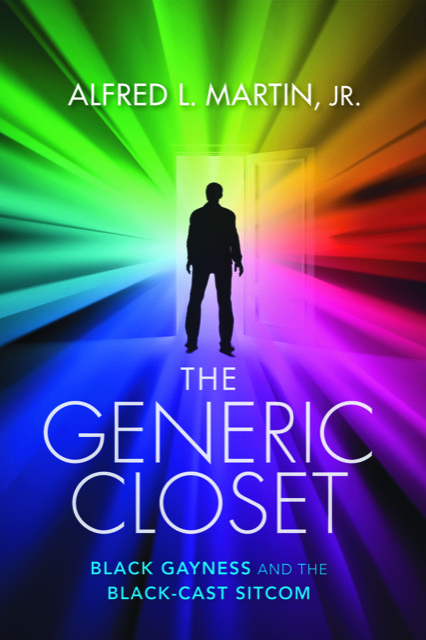
Quare Intimacies: Maria Flood & Victor Evans on ‘Moonlight’
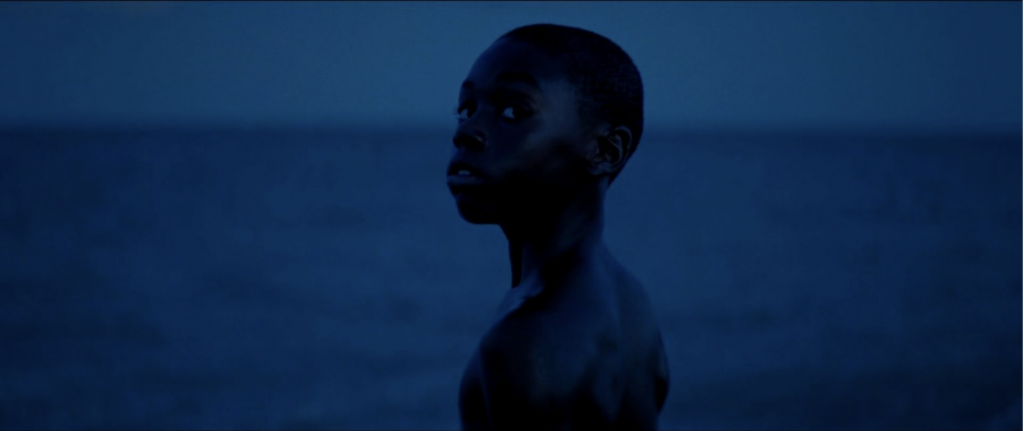
Strategic Advocacy at the GLAAD Media Awards: An Interview with Rich Ferraro
By Lauren Herold
